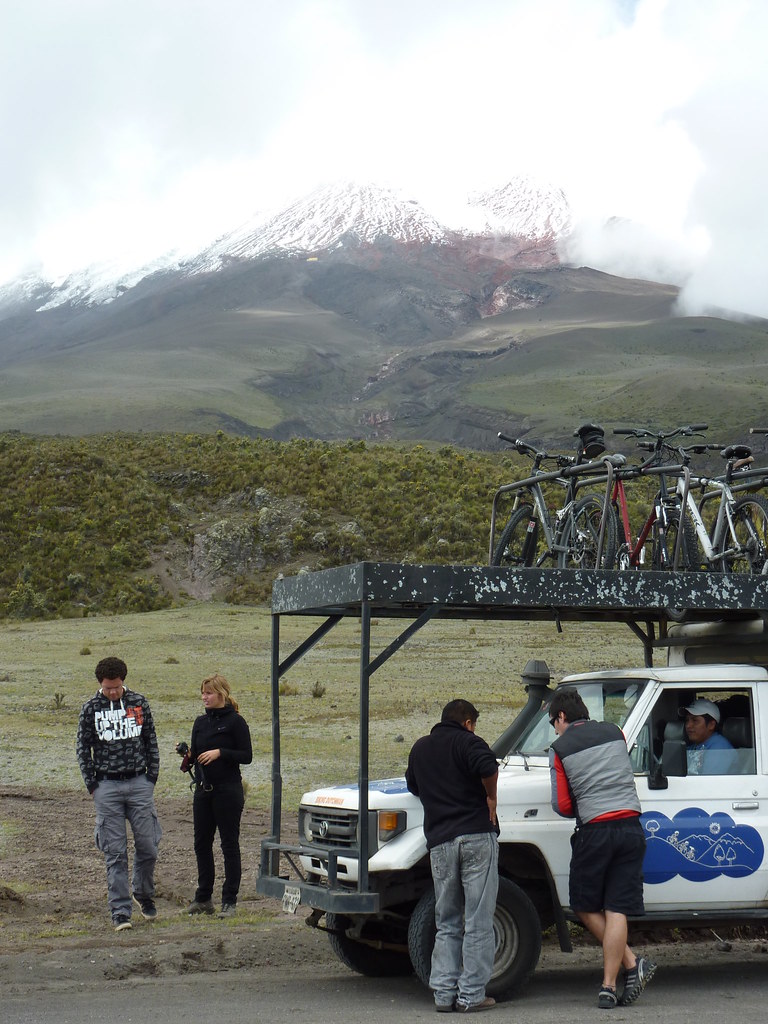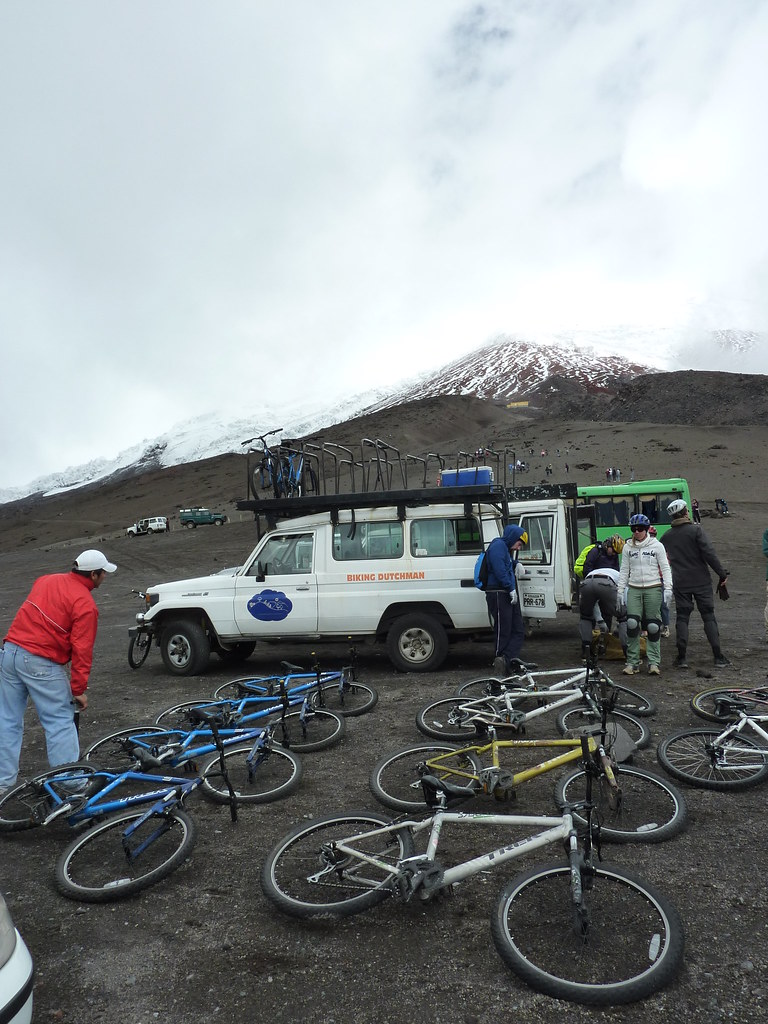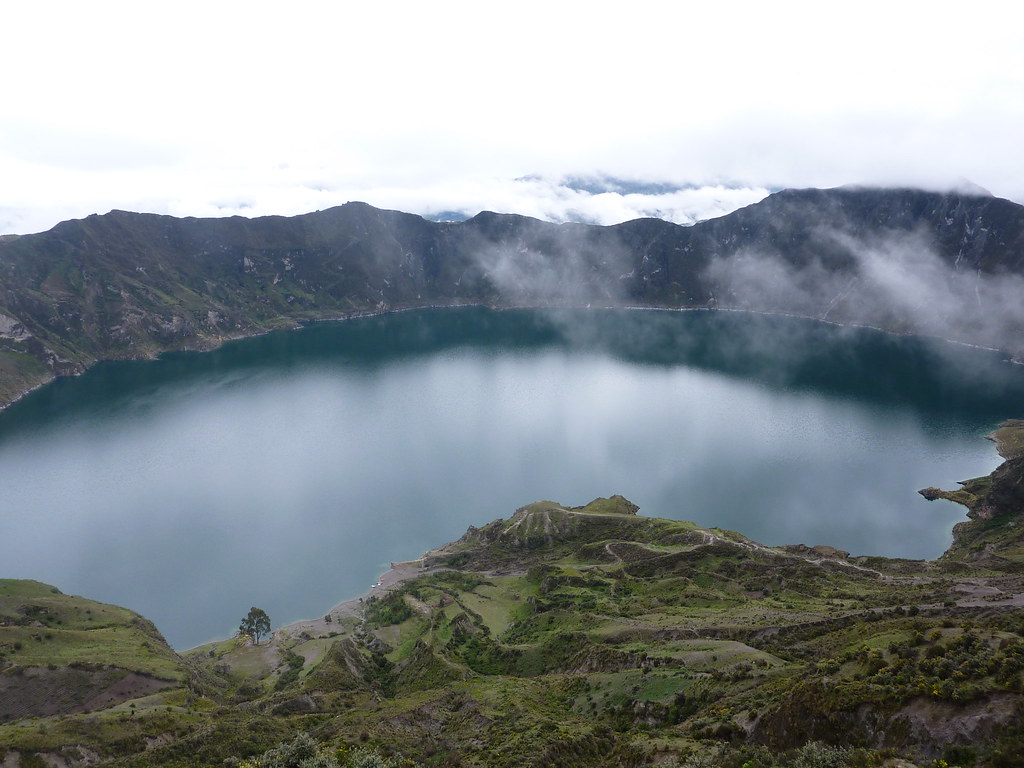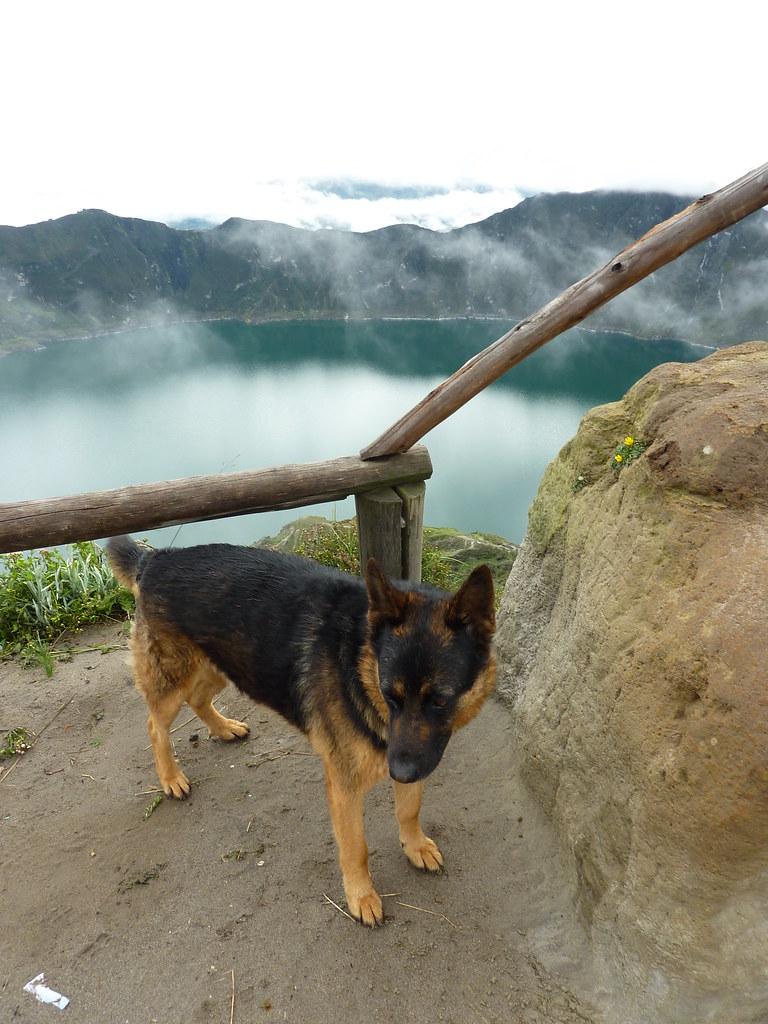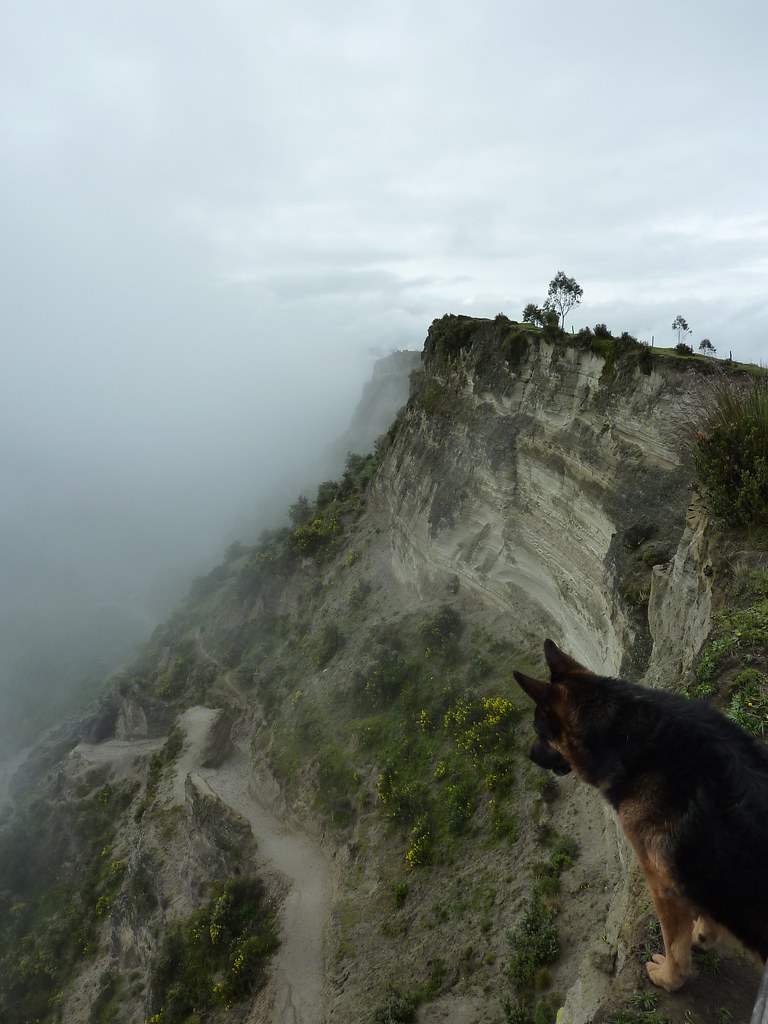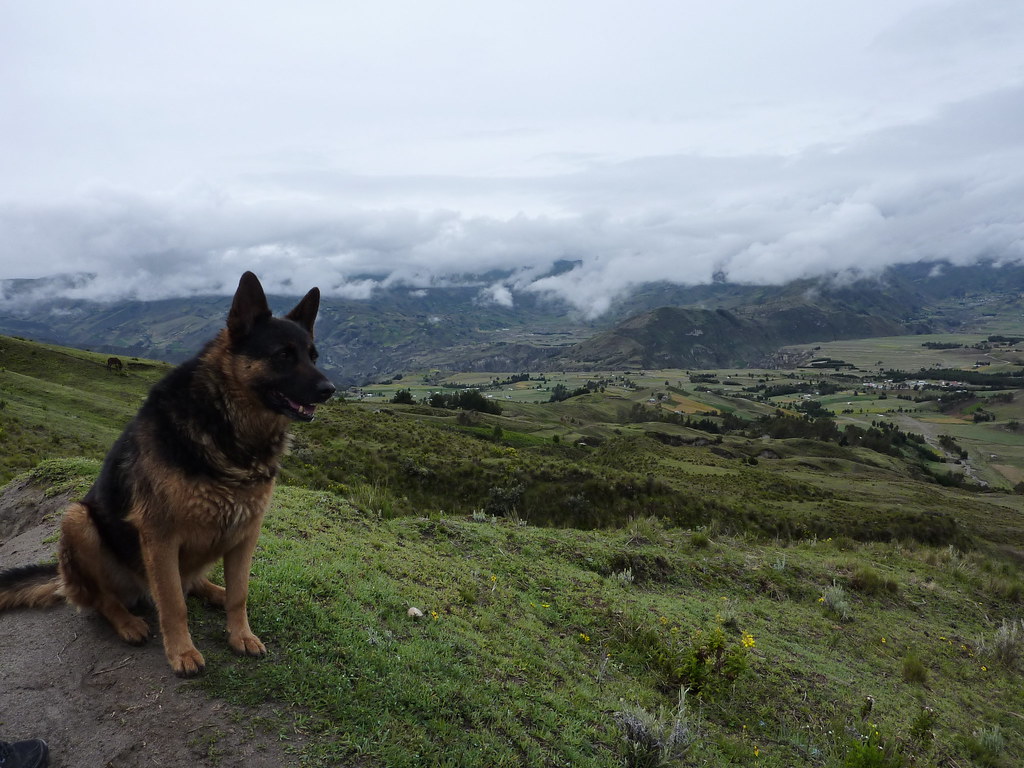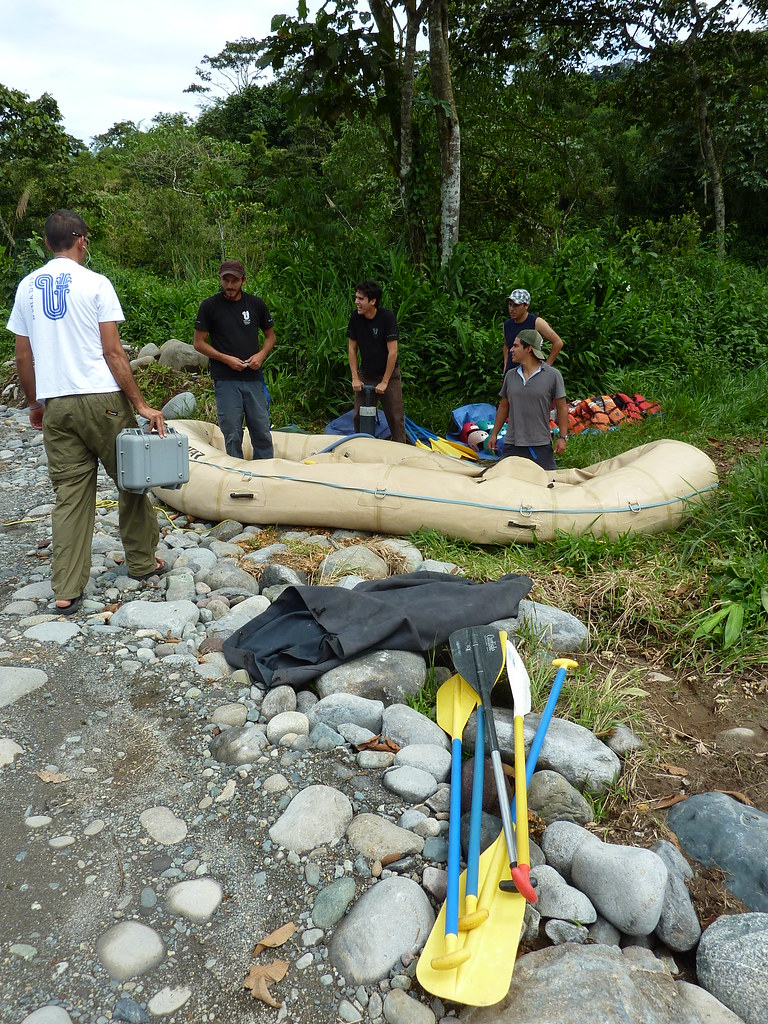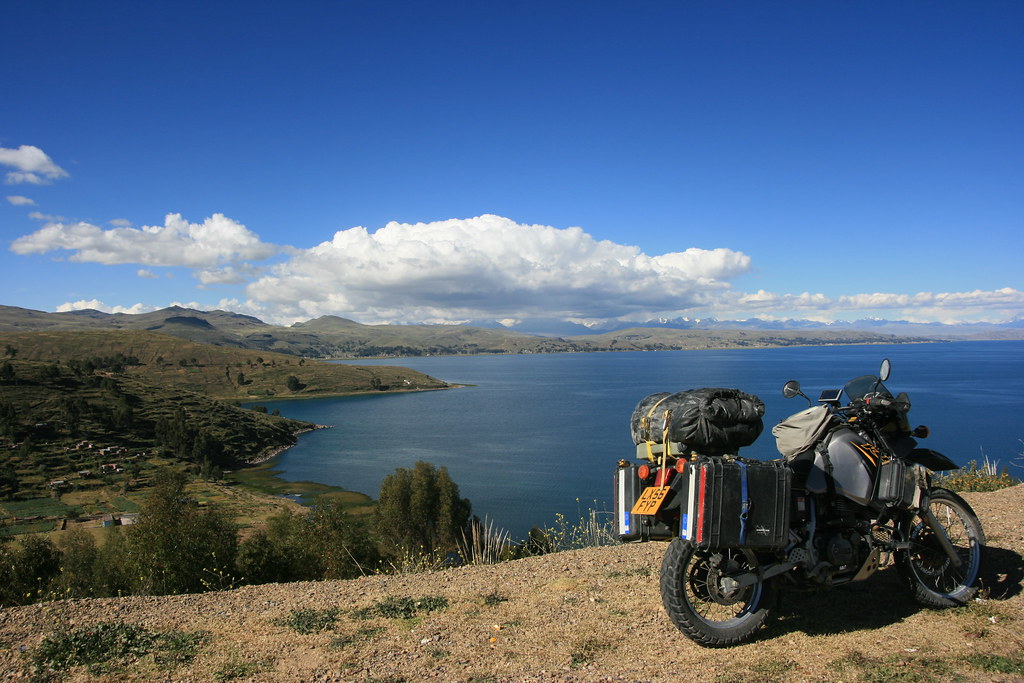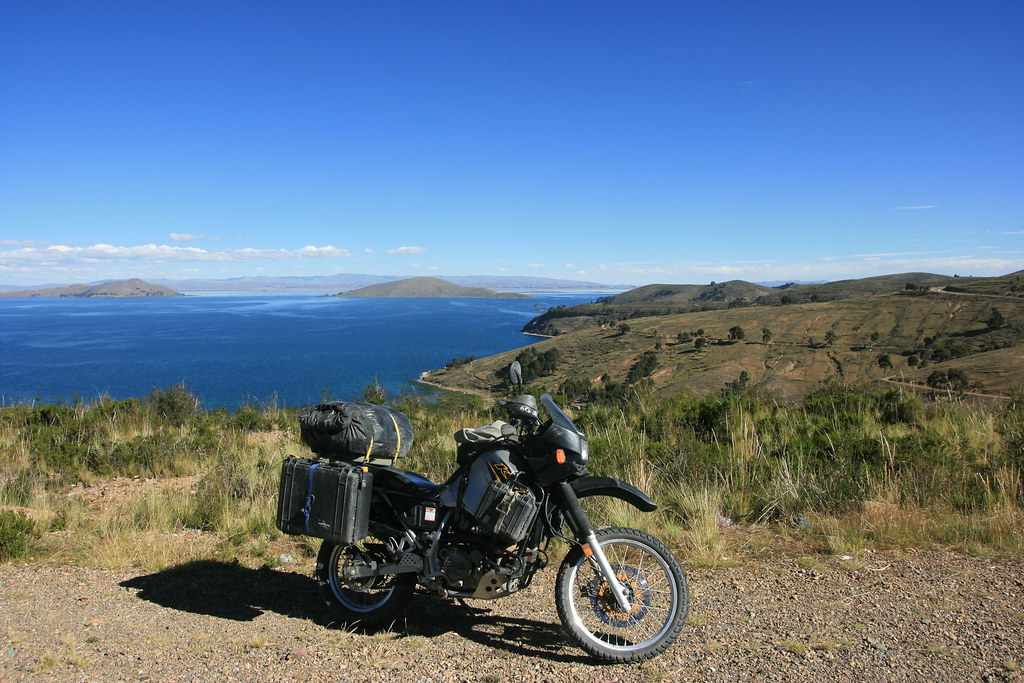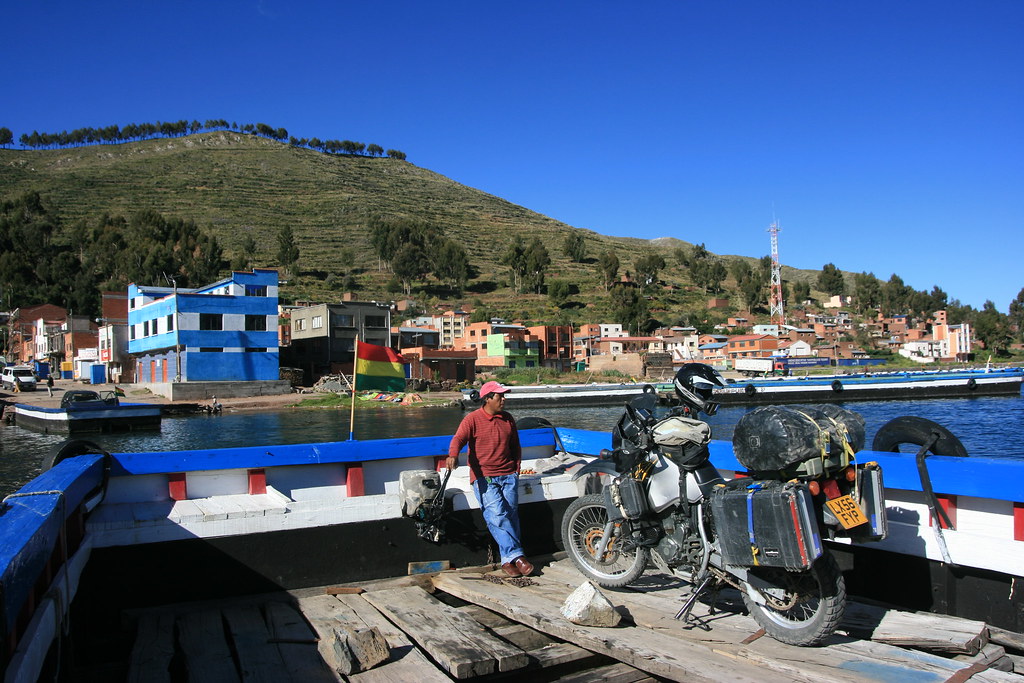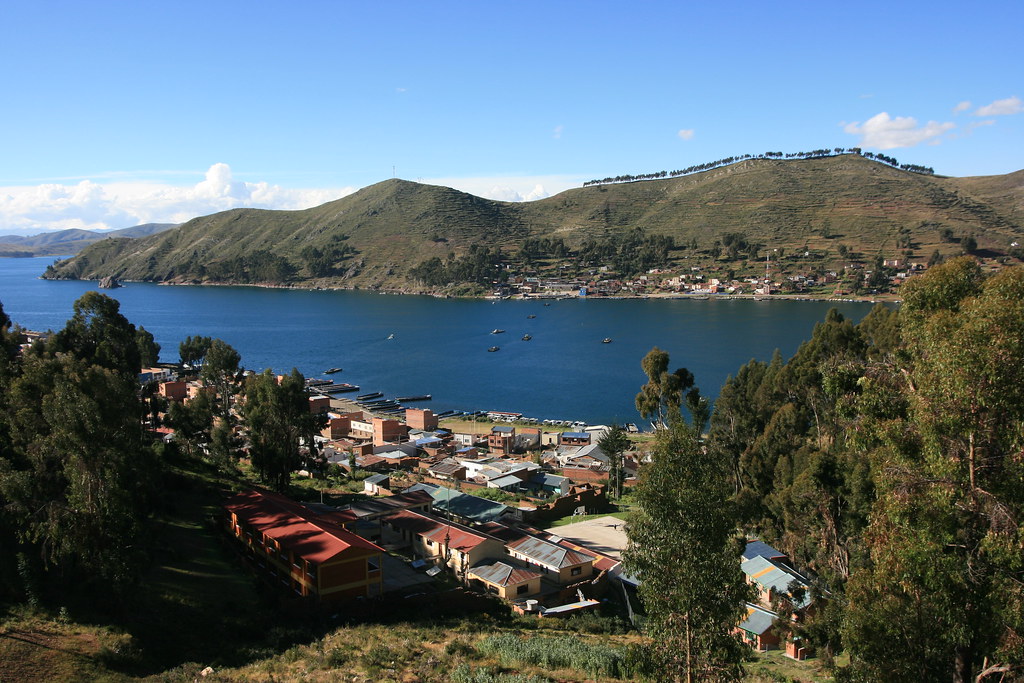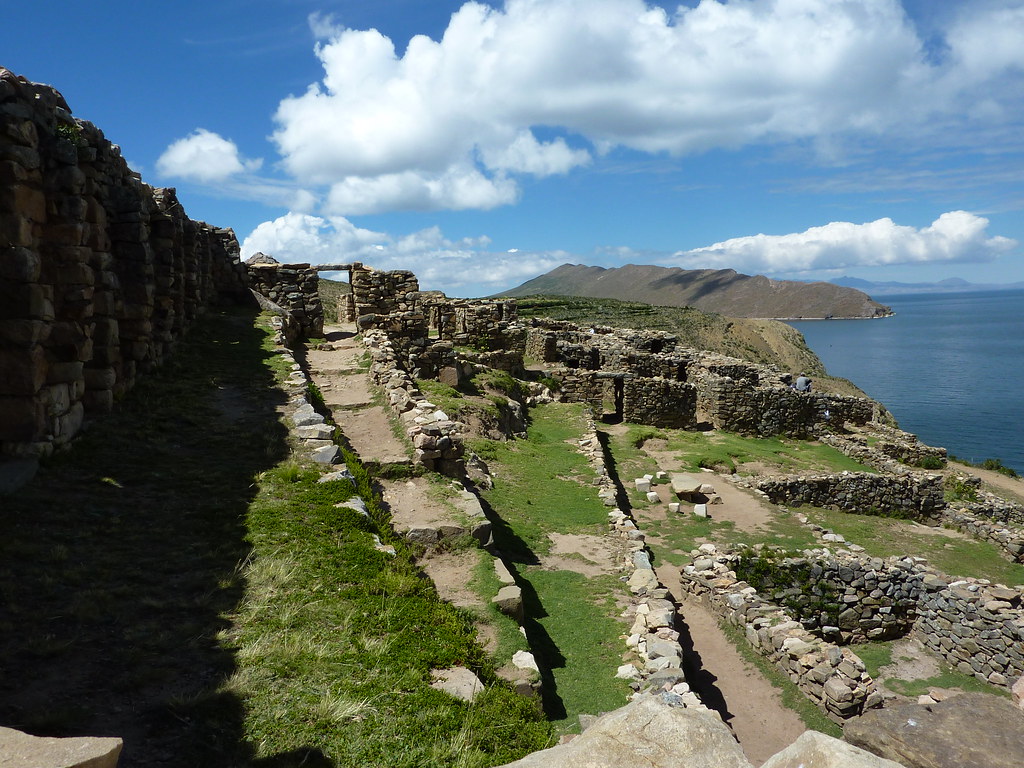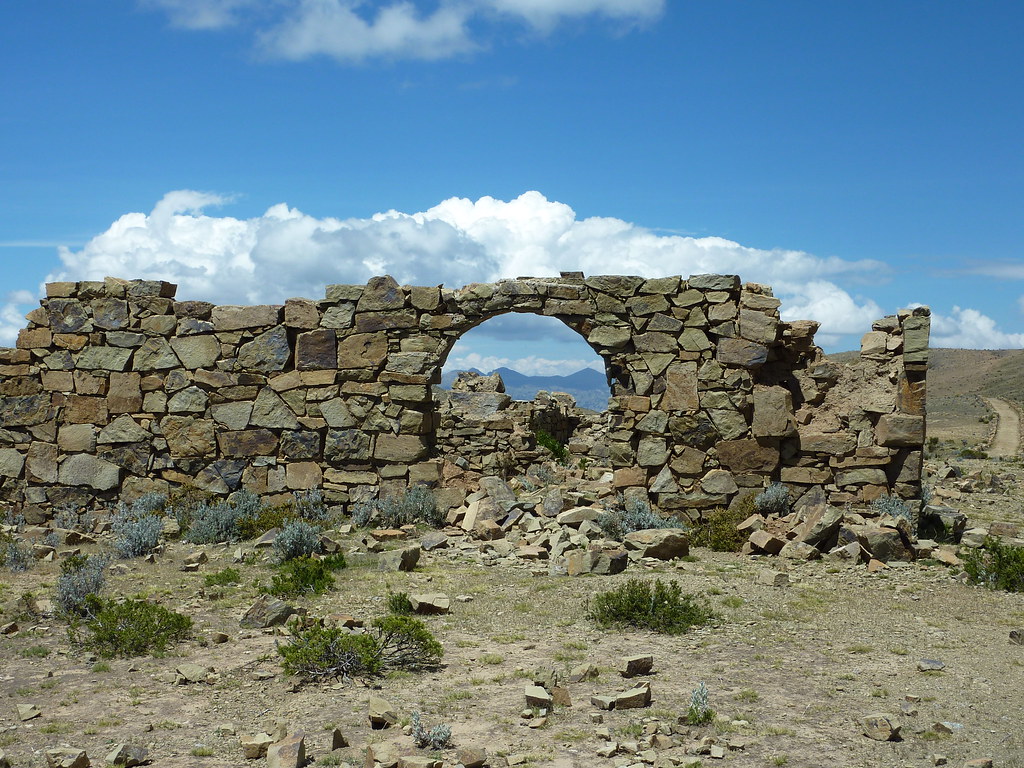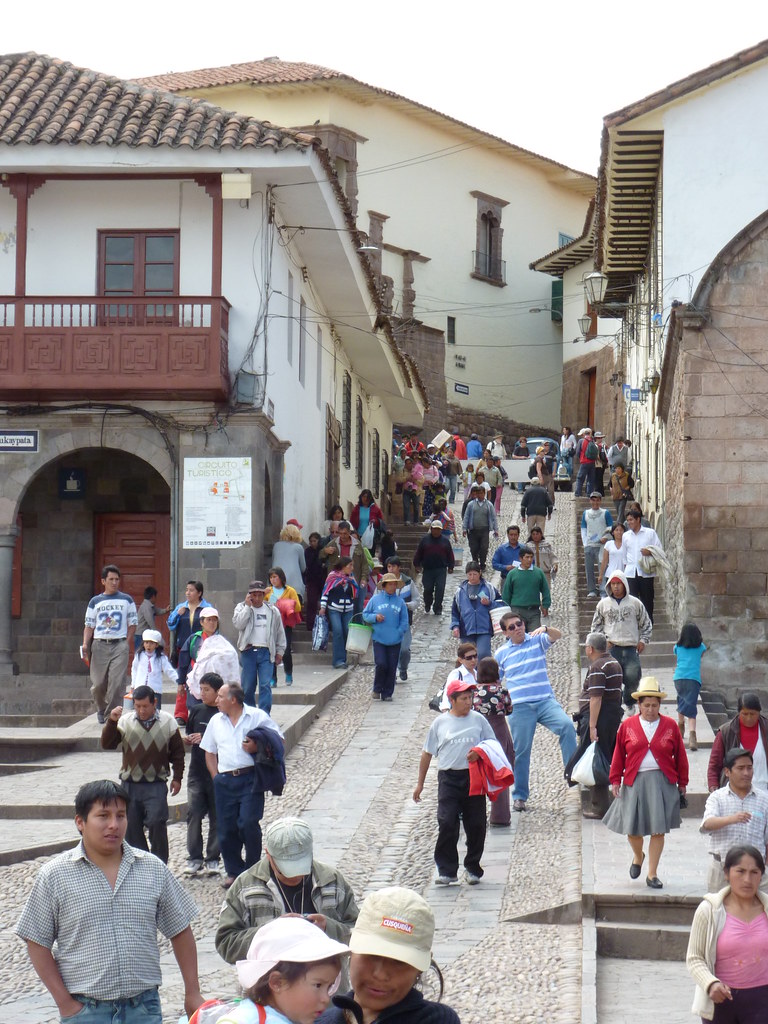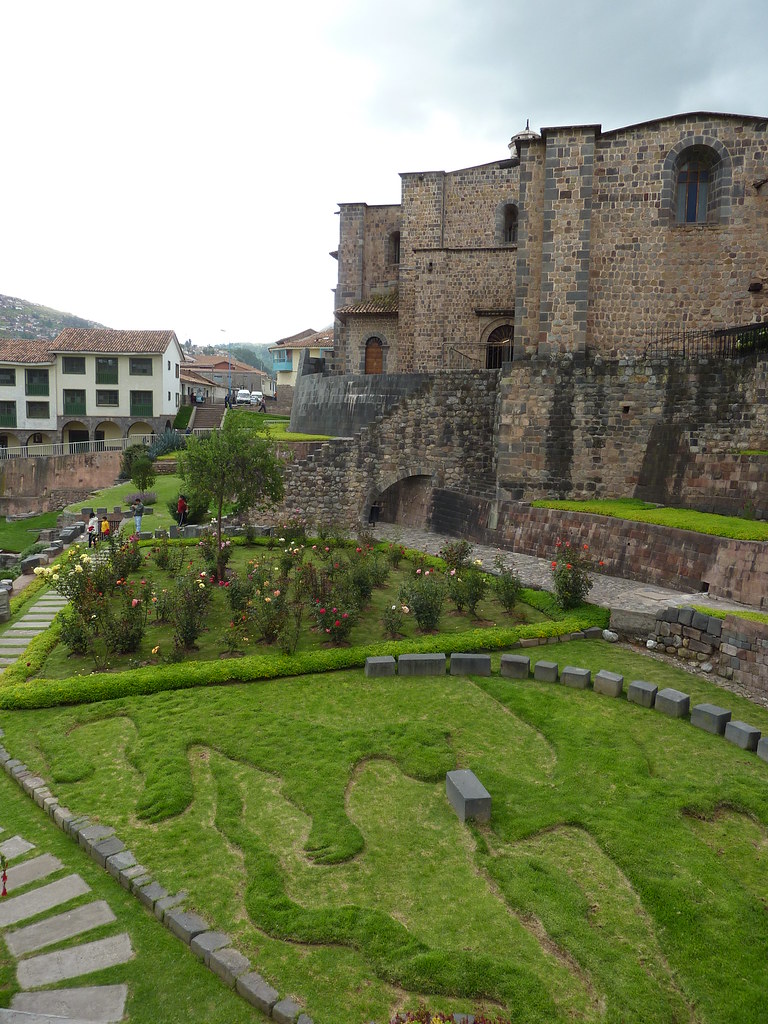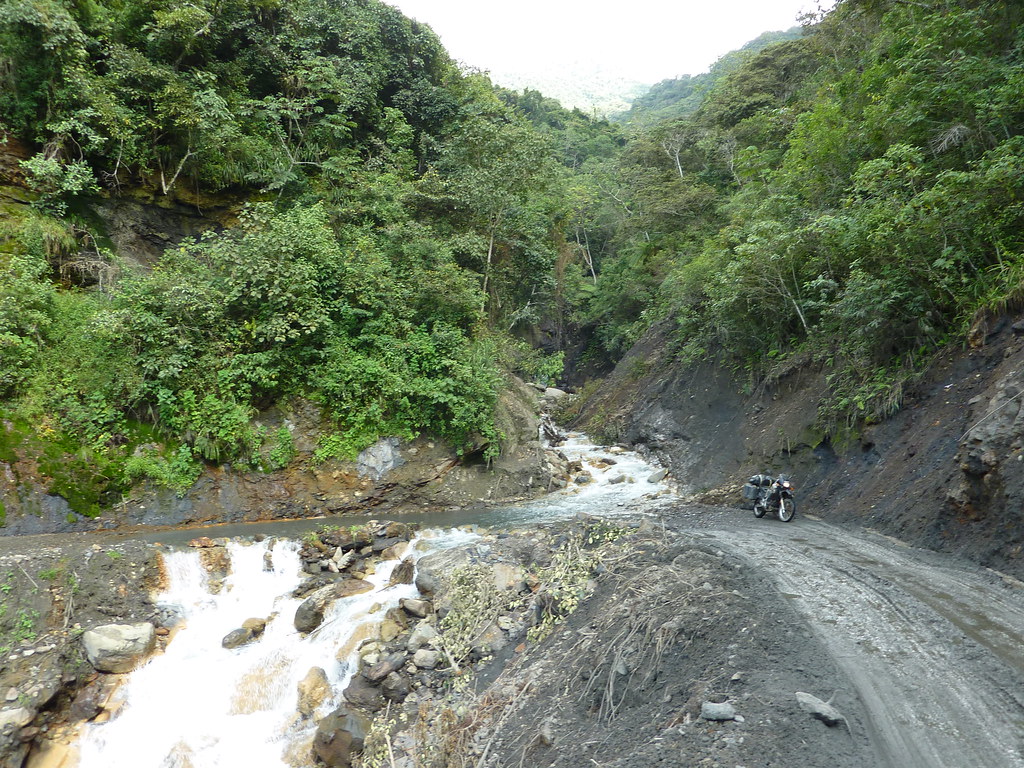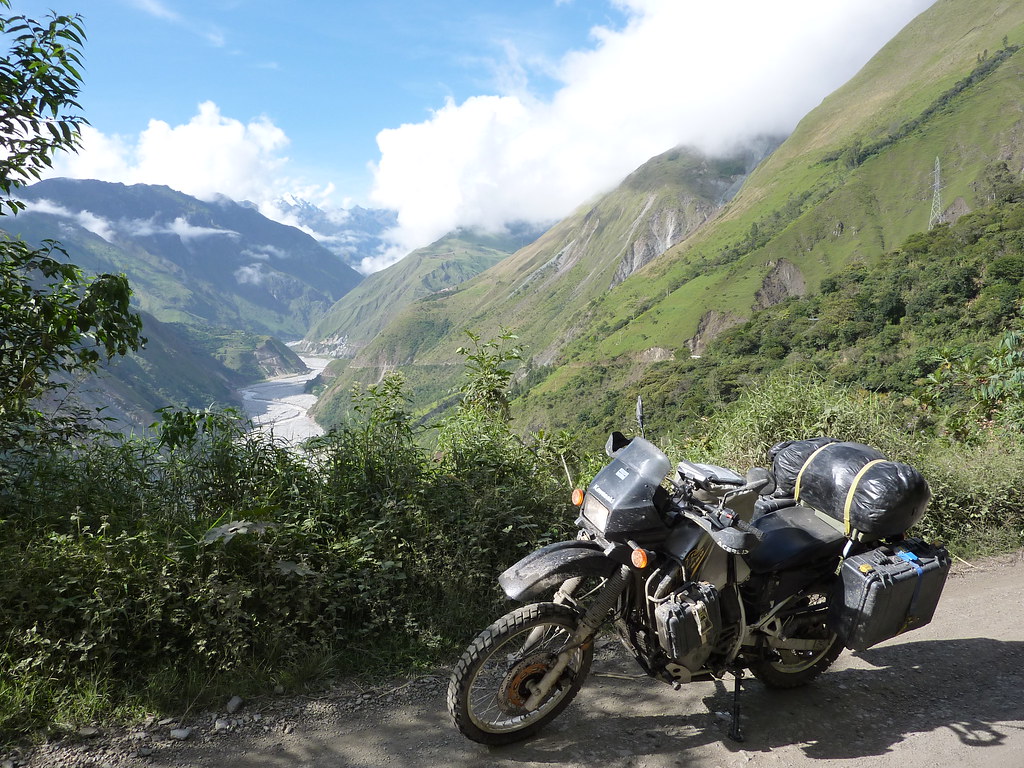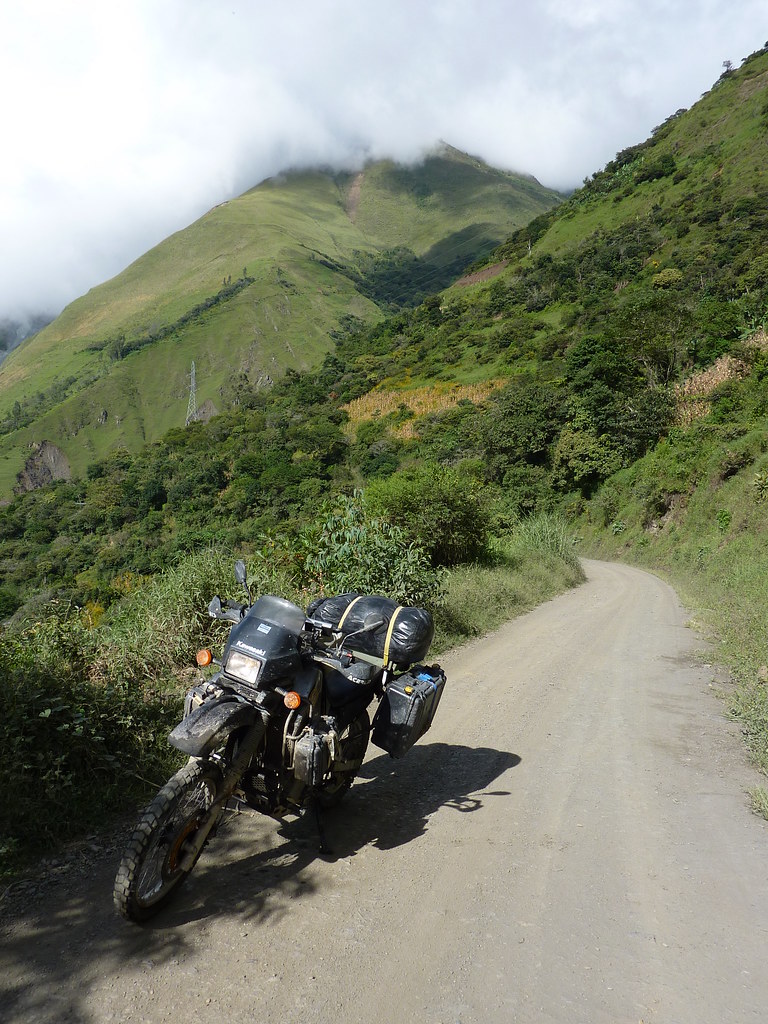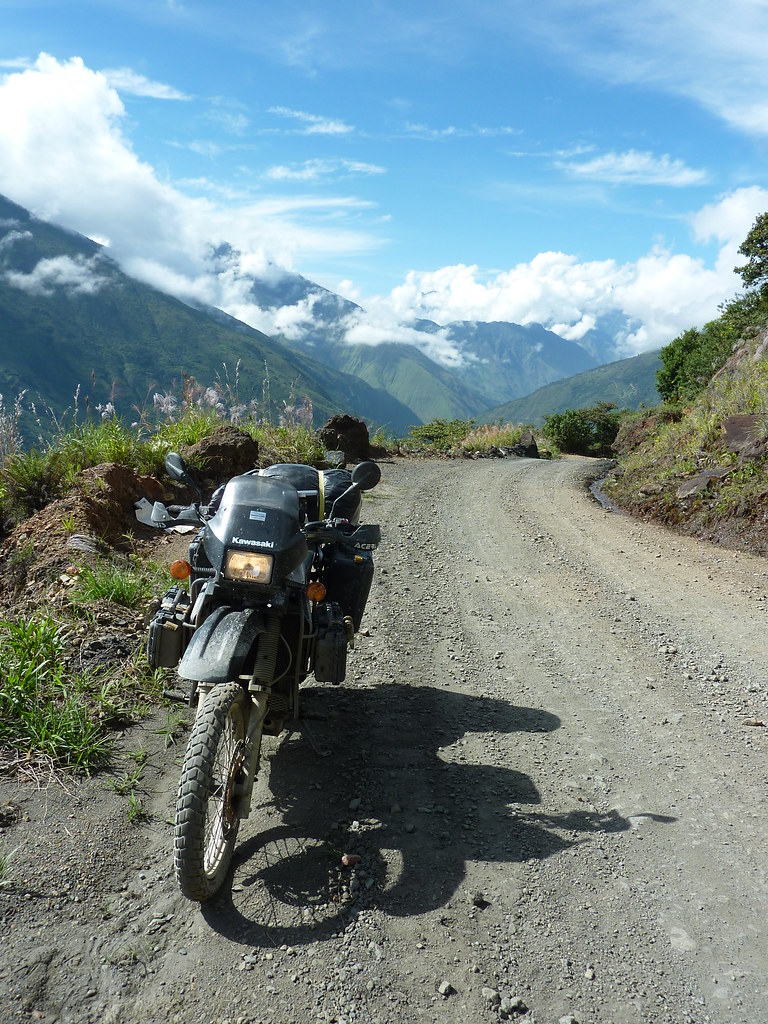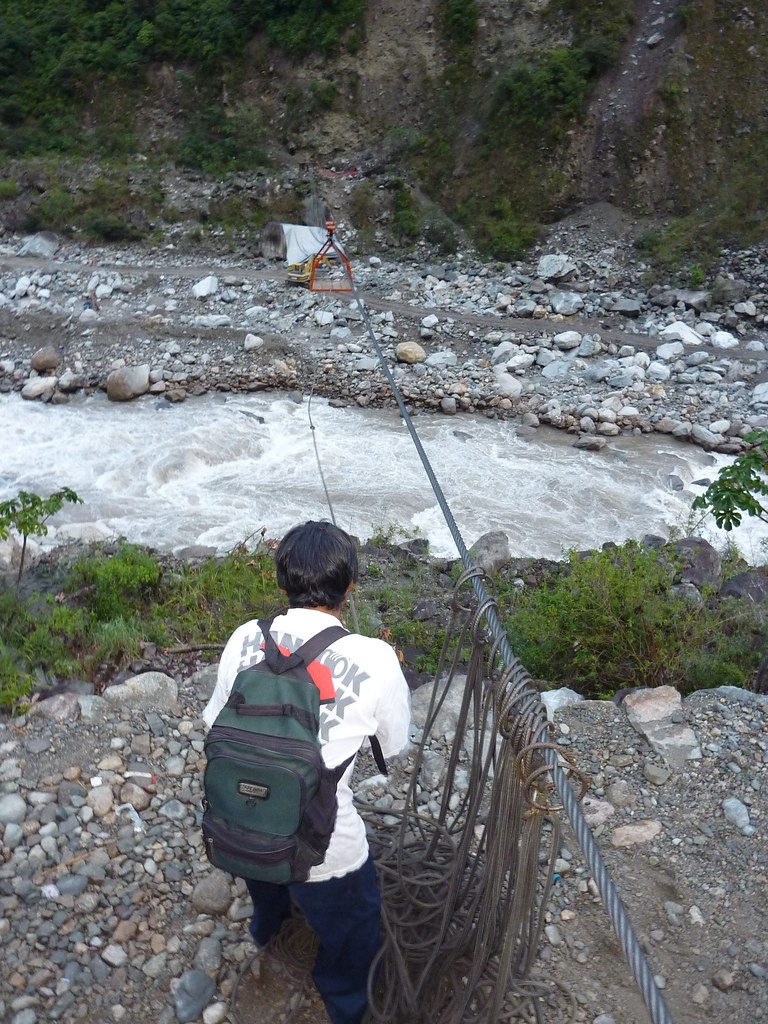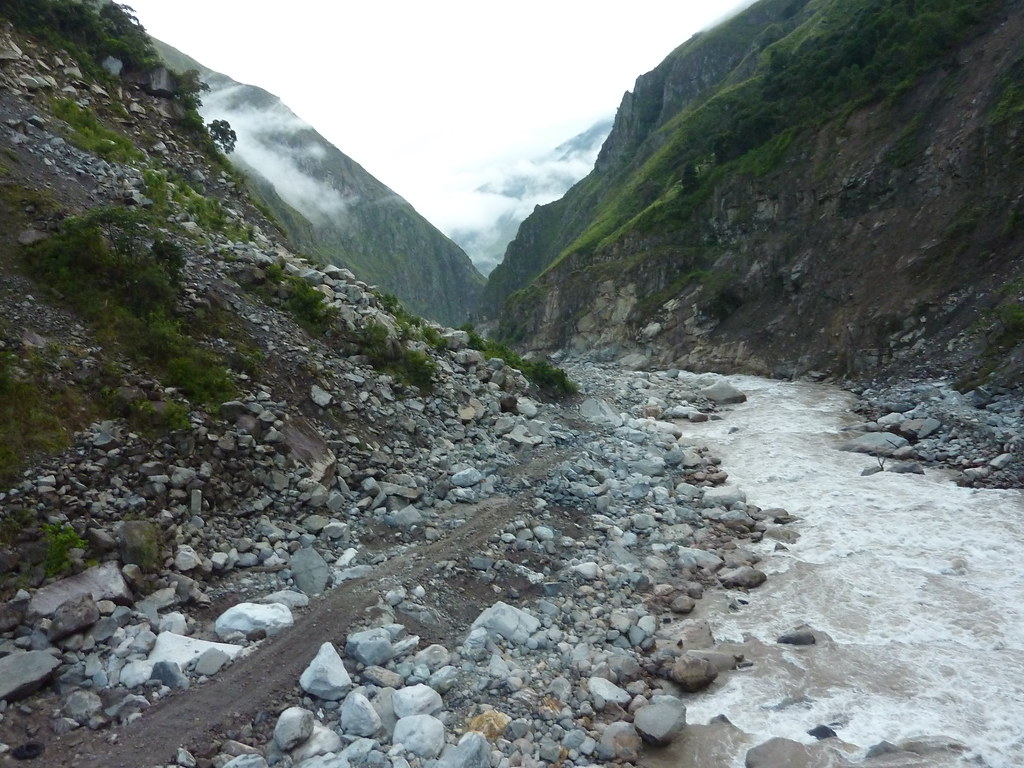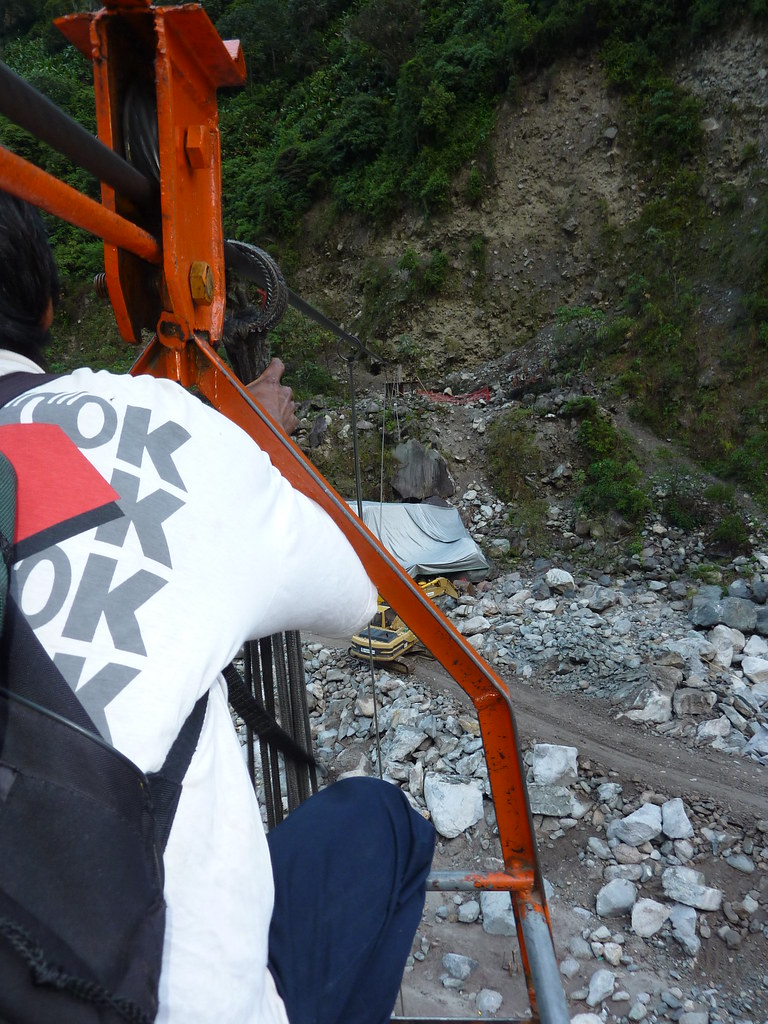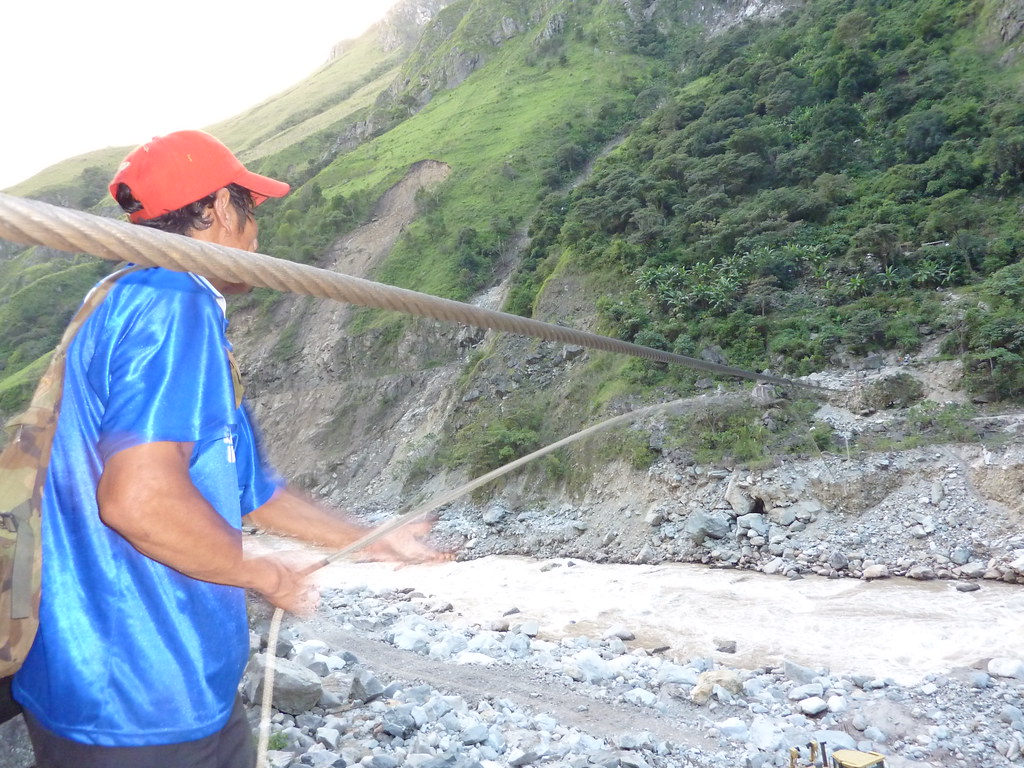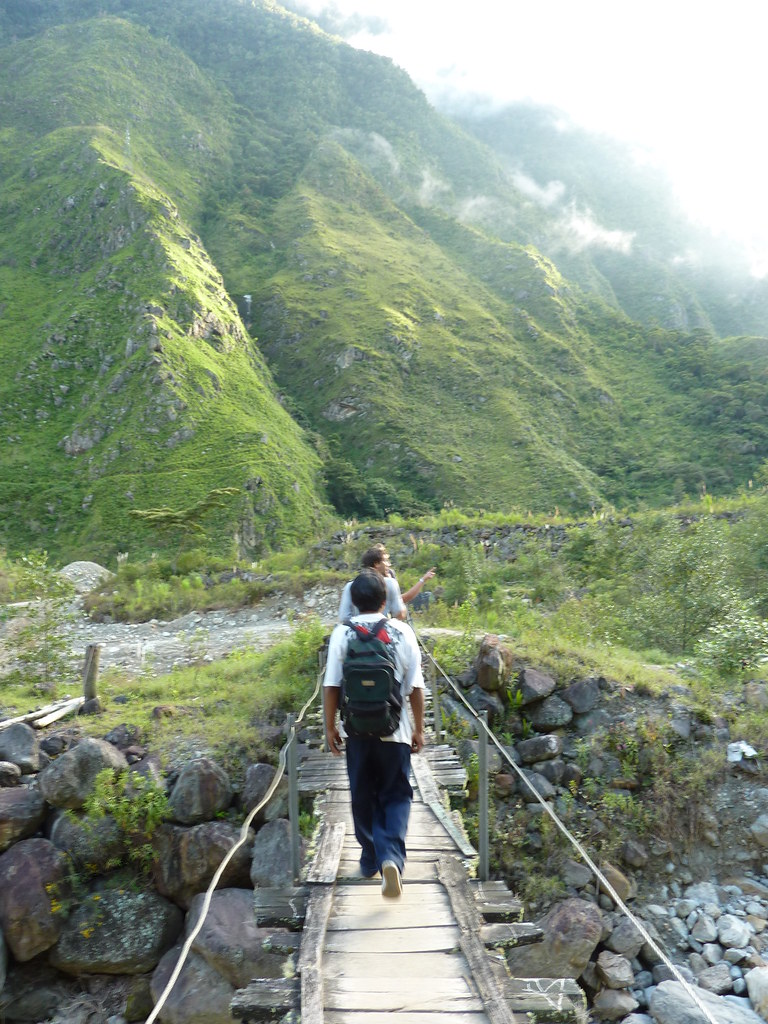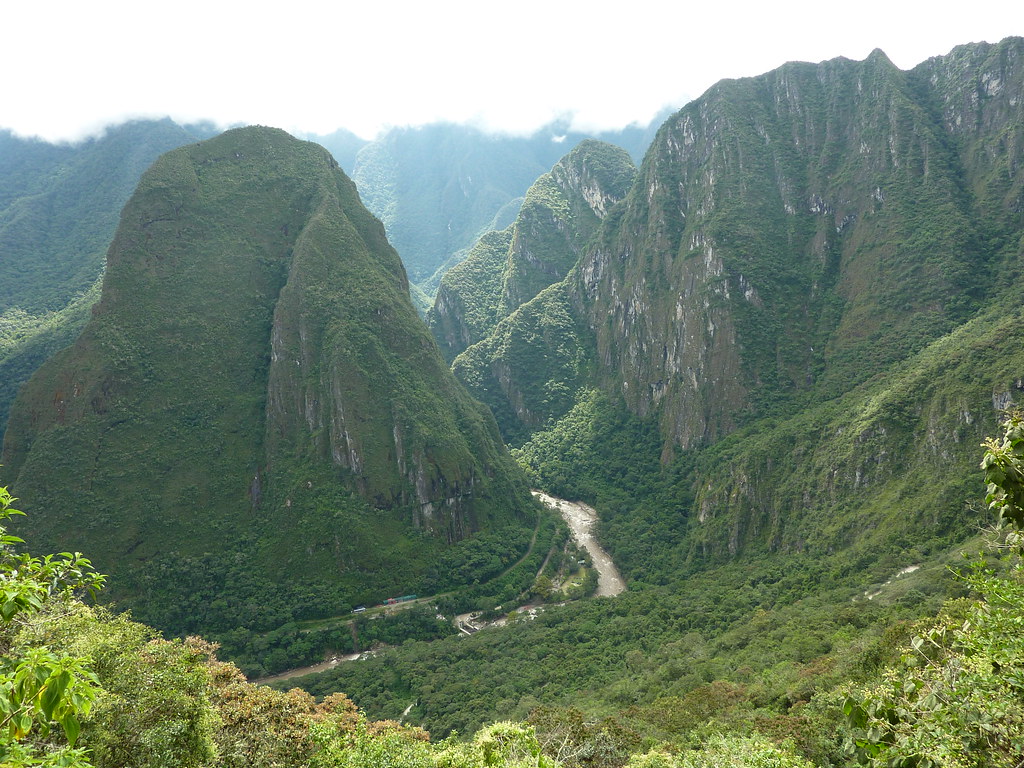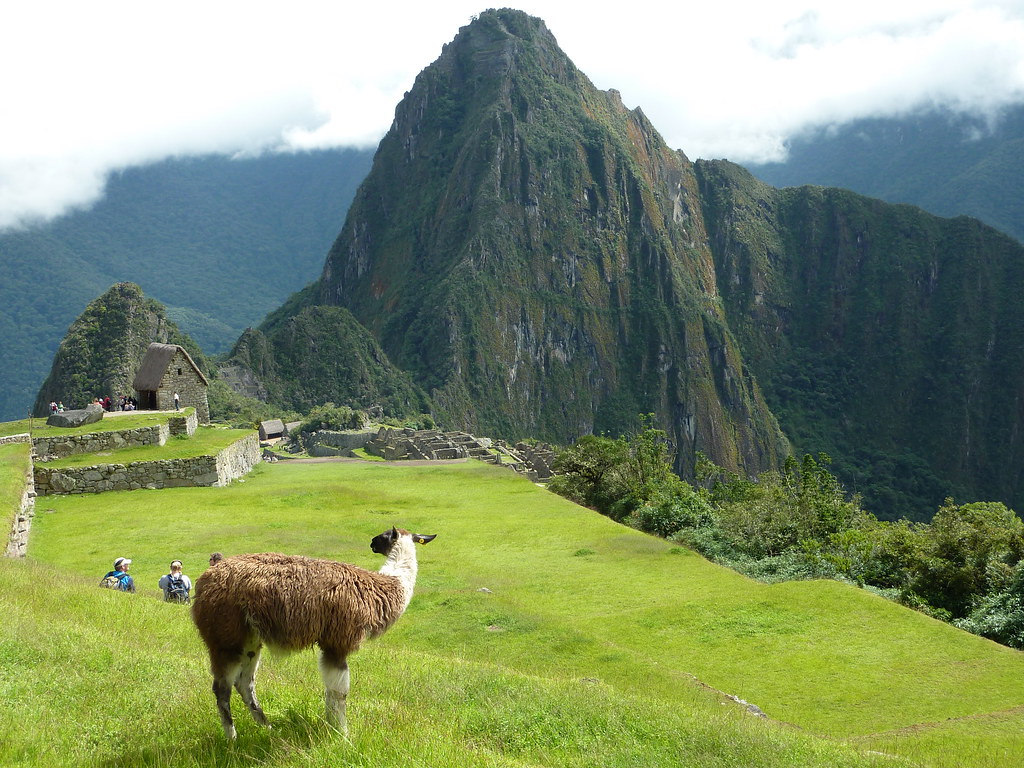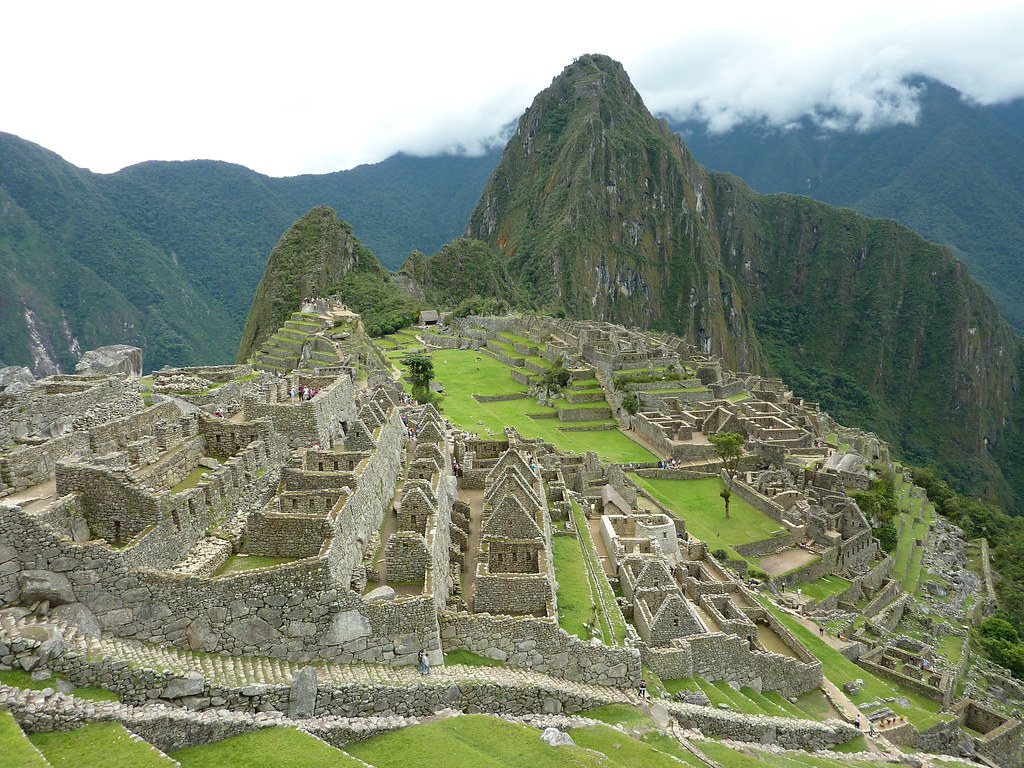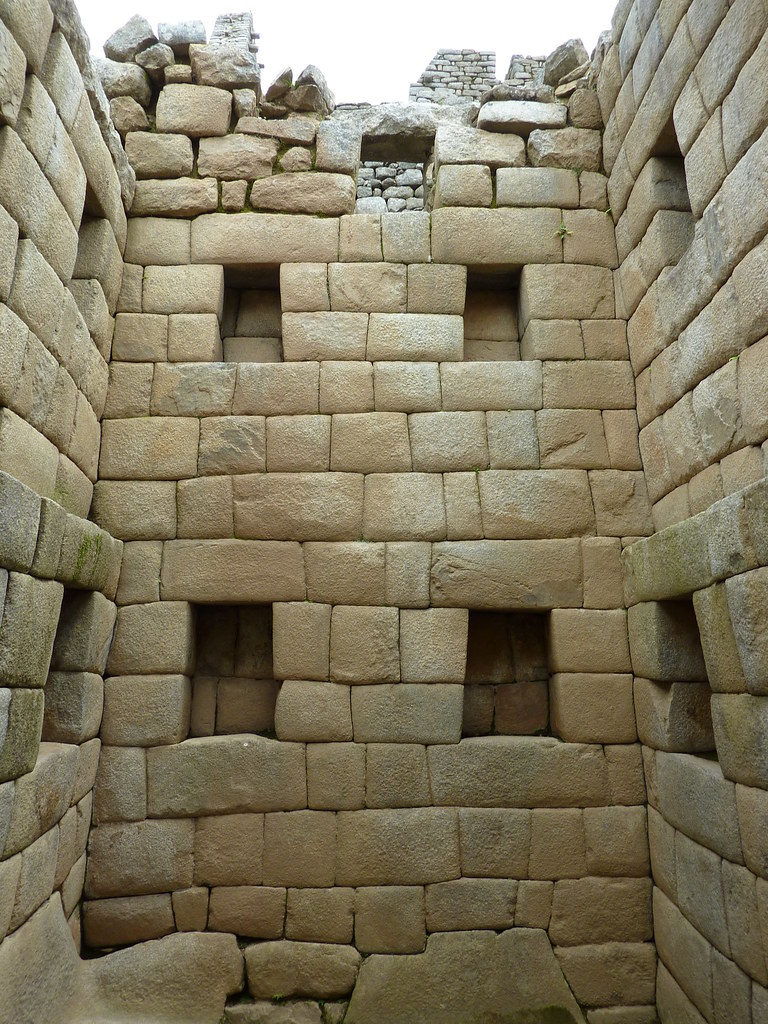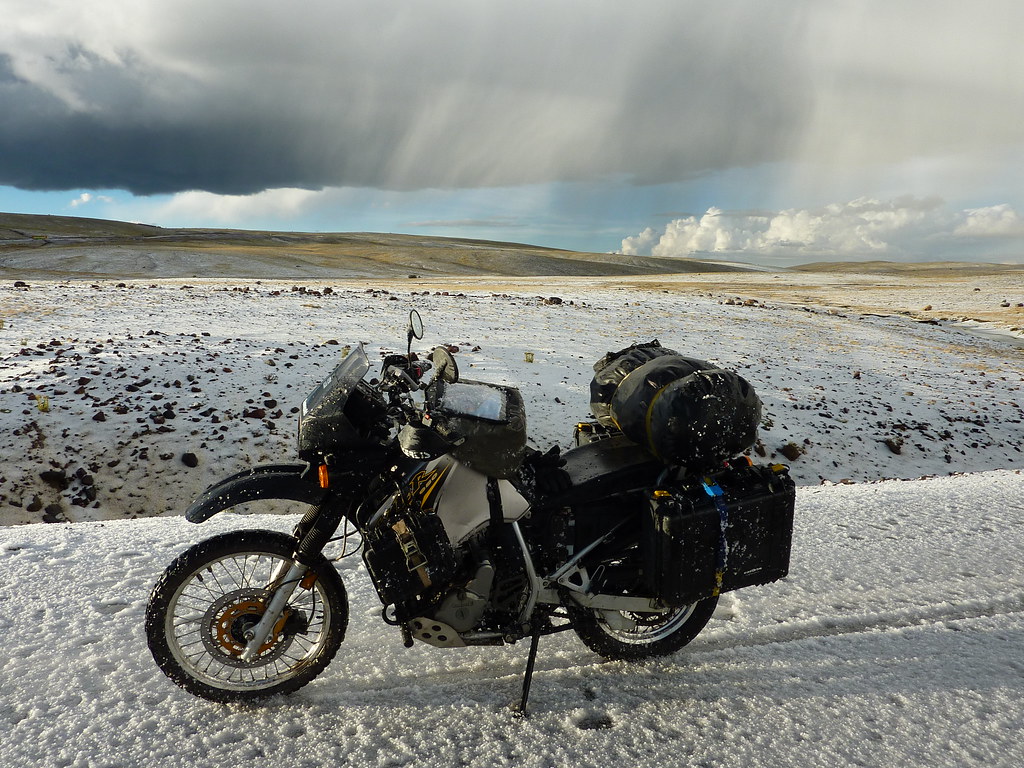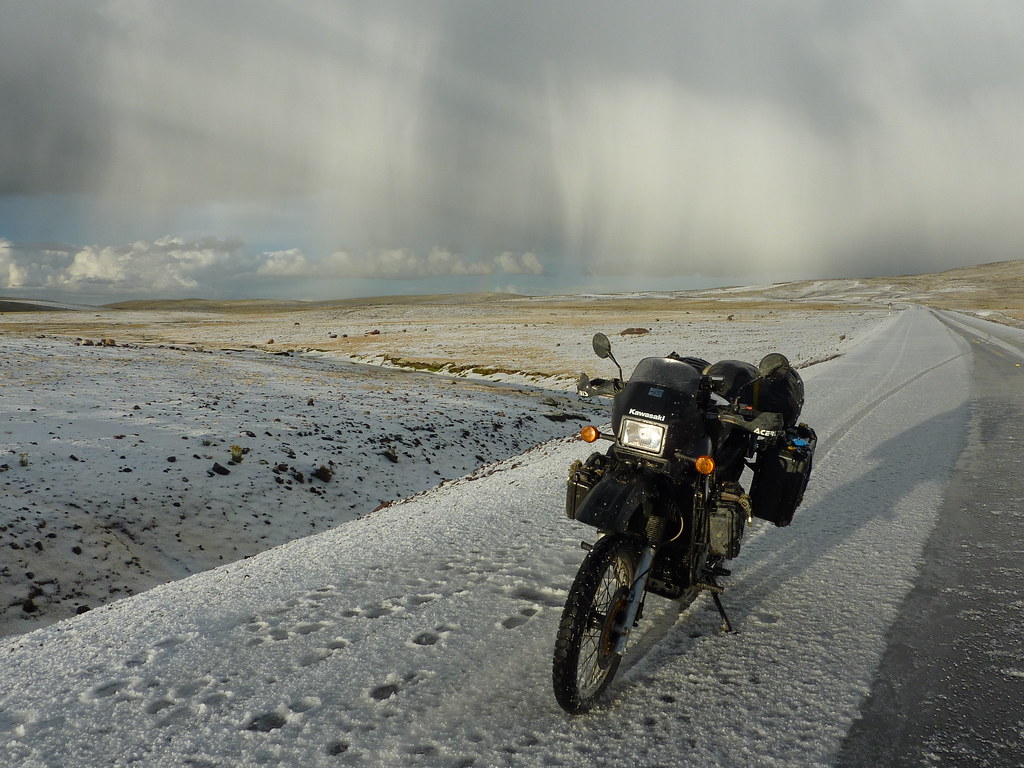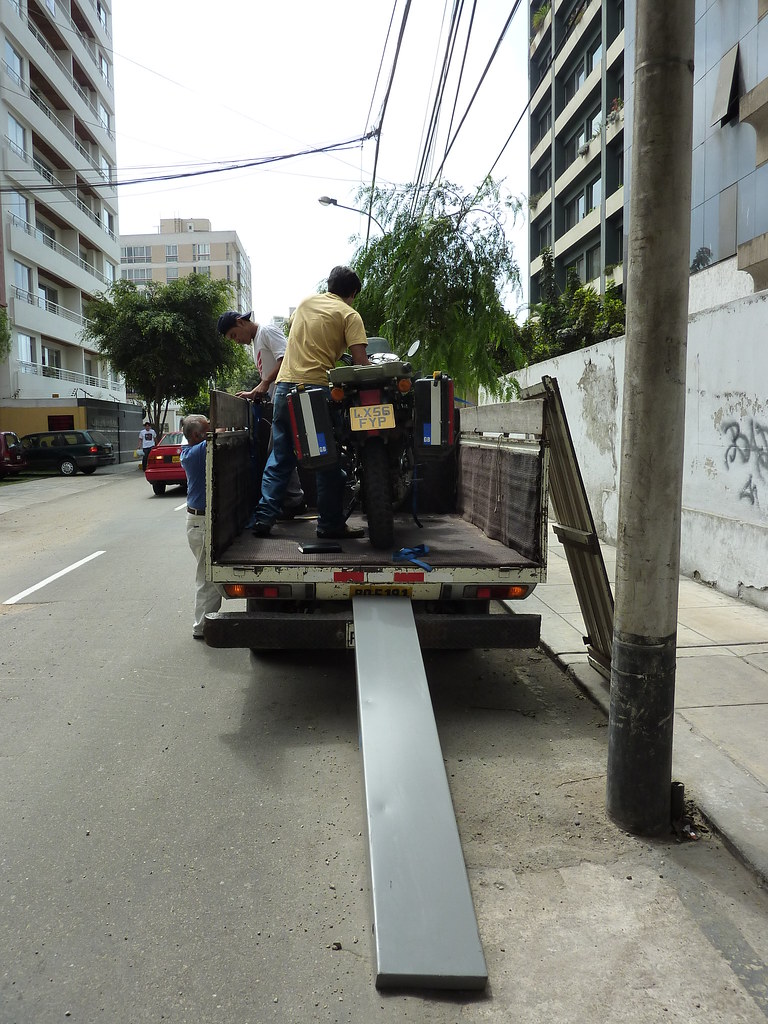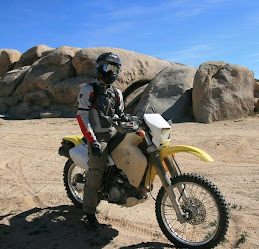The Long Road Home
Having reached the Equator in Ecuador it was time to turn around and begin the long road back to Buenos Aires - 4000 miles of dull Pan American Highway in ten days. And with my bike still in Lima getting repairs, the first 1250 of those had to be by bus.

Long distance buses are an extremely popular way of getting around South America. They ply the highways, connecting the continent´s cities, packed full of tourists and locals alike. That doesn´t make them good though. My 36 hour non-stop journey from Quito to Lima was nothing short of tortuous. Made bad by the terrible Peruvian videos that served as entertainment. Made worse by the air conditioning packing up. Needless to say, the other passengers and I arrived in Lima well-done.
Mercifully though, the capital - which is perpetually shrouded in sea mist - was cool. When I arrived I expected my bike to be fixed and ready to go as it´d been over a week since I dropped her off. But, as is often the case in South America, things aren´t always done on schedule and I was made to wait another day for the repairs to be finalised.
Hello
I filled my time wandering around the upmarket and surprisingly Americanised district of Miraflores - the Beverly Hills of Lima. While running along the misty waterfront I stopped to admire the view over the bay. I hadn´t been running for a while and was panting heavily. At least I thought it was me. But out of the corner of my eye I spotted an oddly familiar sight - a brown, white and black furball slobbering heavily.
>"Hello Tom" - the furball said.
>"Boddingtons!" I exclaimed. "I hardly recognised you with that haircut. What are you doing here?"
As it turned out, Boddingtons had quickly gotten bored with his new home of Ushuaia (it really is just a place to go to say you´ve been there). And so he´d decided to get most of his shaggy coat sheared off and see the warmer parts of the continent. Like me, he´d been doing a big circuit and was now making his way back home. And with 3000 miles of riding still left, I didn´t hesitate in asking him to join me for the return leg of the trip. He agreed, providing we make it a return dog-leg.
It was good to be back on the road with the freedom of the bike and company of an old friend. There´s something very different and infinitely better about actively riding through a country rather than sitting passively in the back of a bus. And with Boddingtons grinning behind me and his ears flapping in the breeze, the riding was easy and fun.
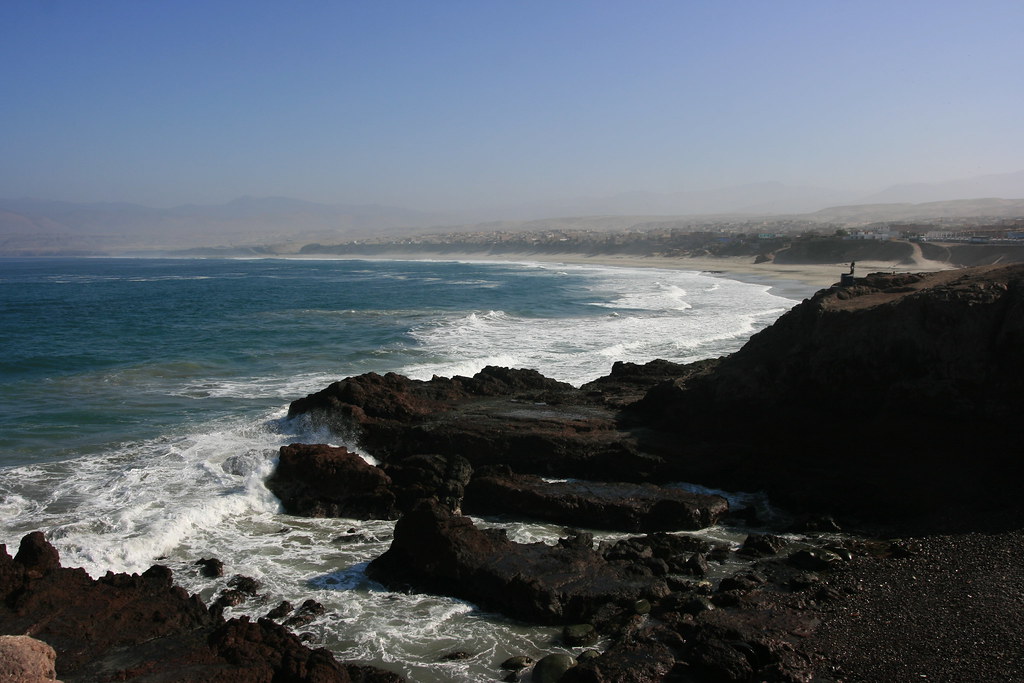
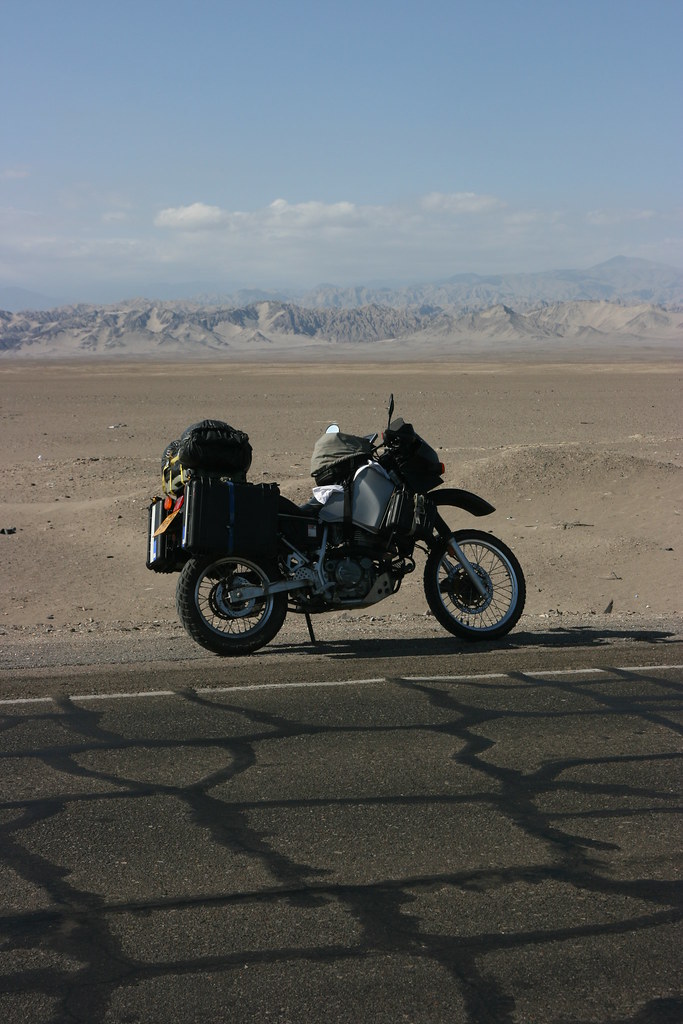
Deja Vu
After a day we´d covered about 500 miles from Lima and it was time for another petrol stop. But as I pulled over I heard a churning noise coming from the engine. Boddingtons noticed it too and asked what it was. I didn´t know for sure, but it was oddly reminiscent of the noise my bike made in Malawi just before the engine seized on my last trip. Worried, I checked the oil for the umpteenth time that day and confirmed yet again that the level was fine. Puzzled, we hopped back on the bike and motored on.
A few minutes later the engine temperature began to rise and the engine quickly lost drive. Surely not another seized engine? I couldn´t believe it. Twice in as many trips and only 500 miles since the last set of repairs. This was irritating and serious. We were in the middle of the desert in Peru - a country not known for its abundance of Kawasaki parts. And if something had broken in the engine it´d take weeks to get the necessary parts shipped in from Chile - weeks we didn´t have.
Boddingtons howled his condolences as I kicked the dust angrily. A quick game of fetch calmed us both down, and we soon set about hailing down a truck to get the bike to the nearest big city - Arequipa, in Southern Peru.
Following several failed attempts at flagging one down, Boddingtons offered to do a few parlour tricks to attract attention. After playing dead, doing a backflip and offering his paw to the drivers, we hit on the Peruvian sign for "Stop - I need help with my bike" - a dog with a spanner balanced on his nose.
A big 18-wheeler soon pulled over with Zach and his friend in the cab. Their truck was too high to lift the bike onto but they offered to help us flag down another truck. And soon, Paul Martin and his big transporter had pulled over. Together we all heaved the bike onto the behemoth and Paul used his expert knot tying skills to lash the bike between two shiny new Nissan 4x4s.
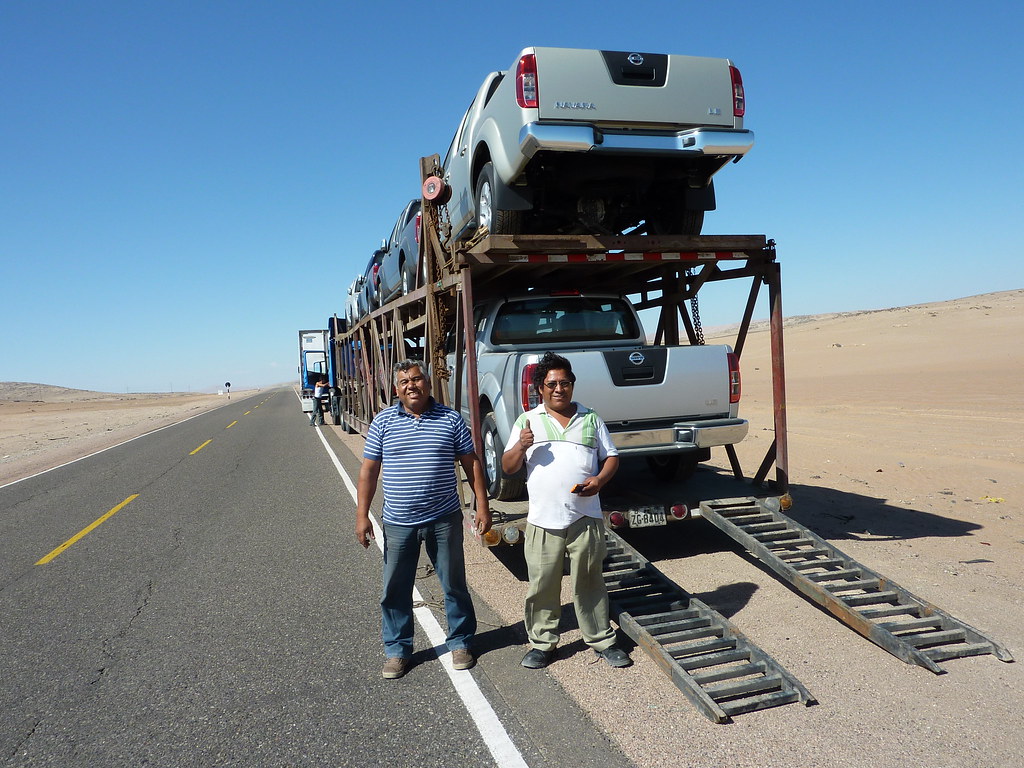

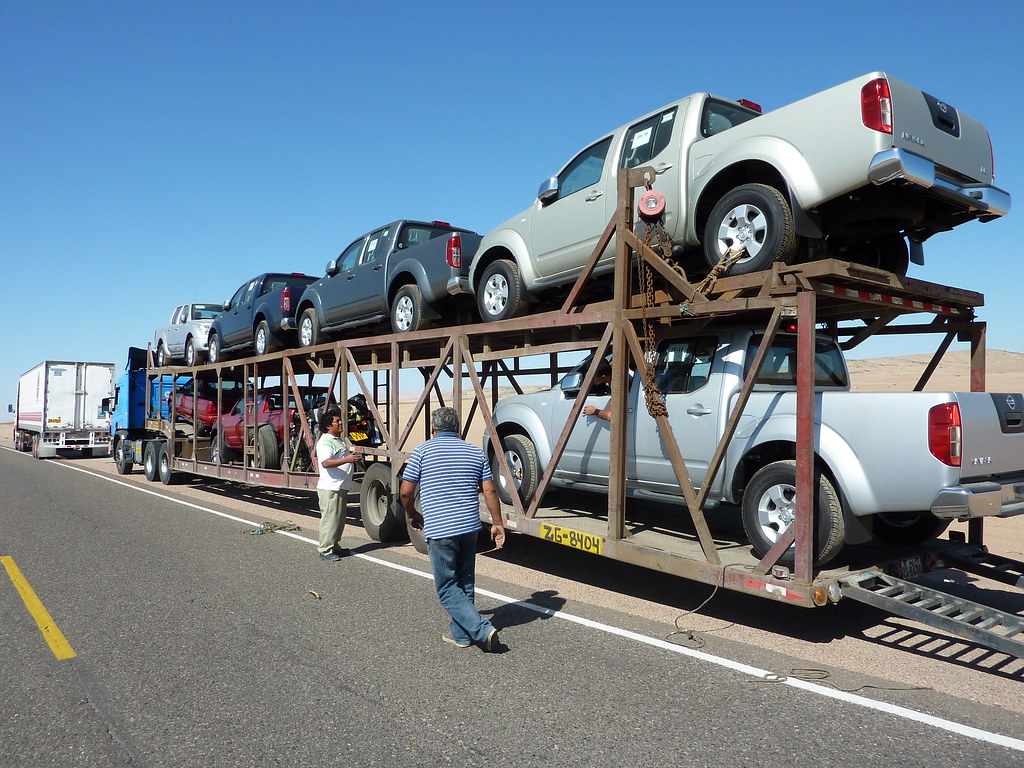
As I climbed into the transporter´s cab, I was surprised to be greeted by Paul´s young family. Apparently his wife and three year old daughter often accompanied him on the long journeys from Lima to Arequipa. For a pleasant hour we made smalltalk as we chugged slowly along, passing through the occasional village.
On the outskirts of one village - Tambillo - the road narrowed as it turned a blind corner. Paul chugged the transporter slowly around the bend only to see an unbelievable sight - two big trucks side by side coming the other way. One of the foolish drivers was trying to overtake the other in a dangerous passing move I´ve witnessed a hundred times in Peru. But with nowhere to go, the three trucks smashed together - the sound of crunching metal and breaking glass echoing through the village.
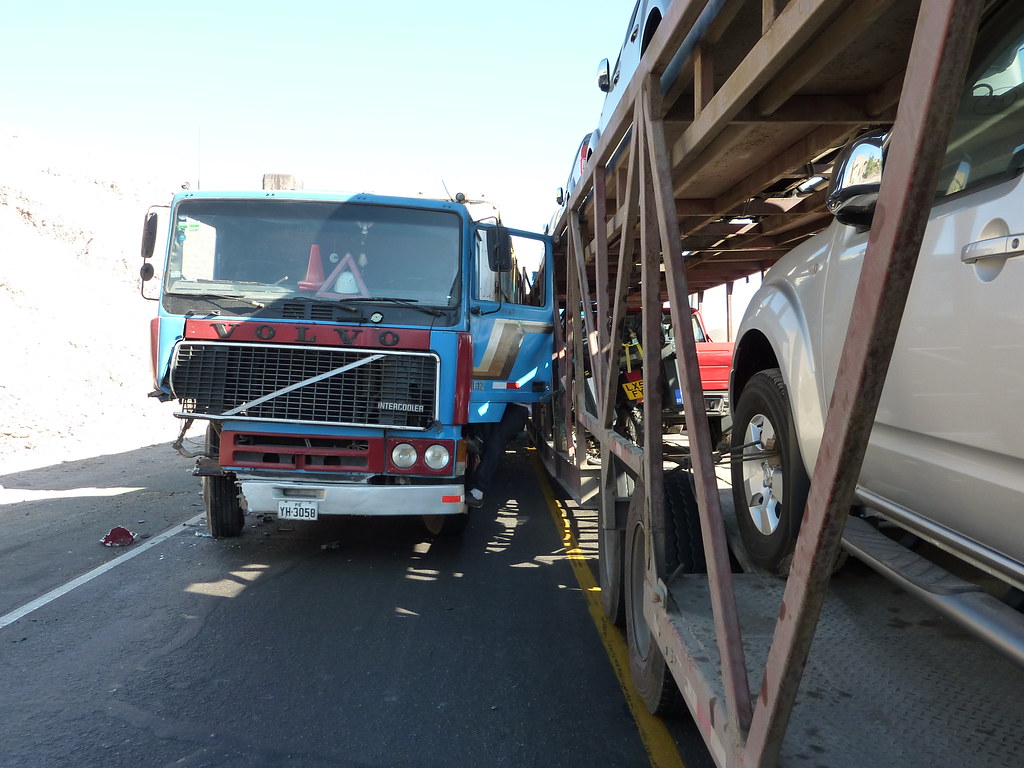
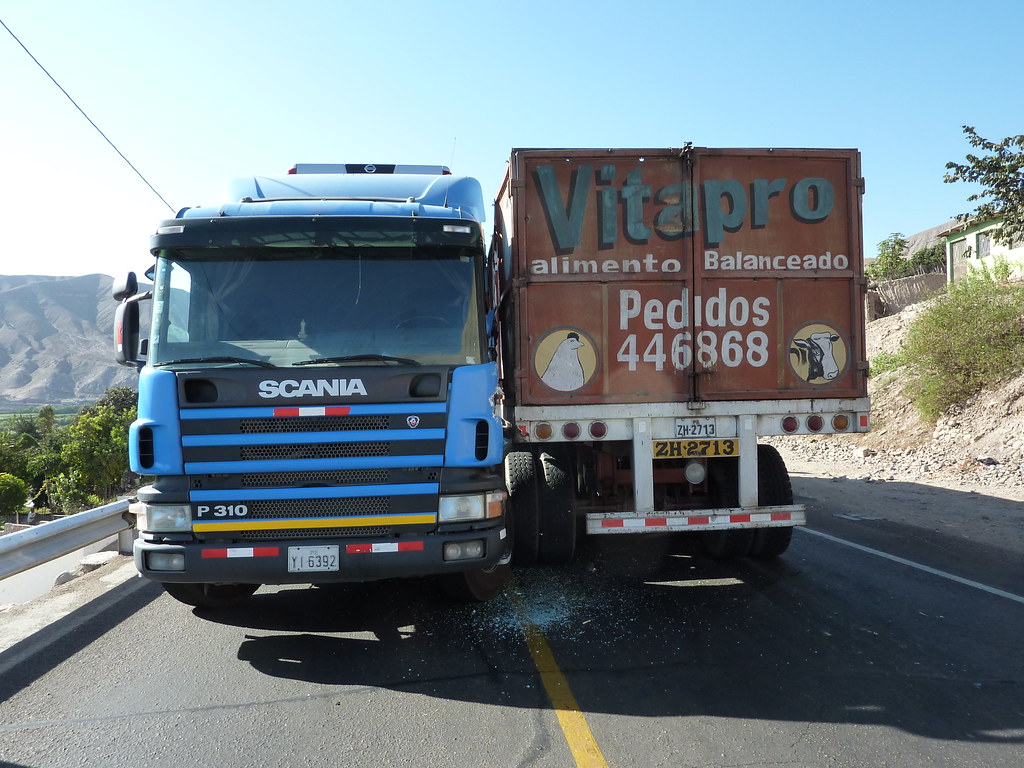
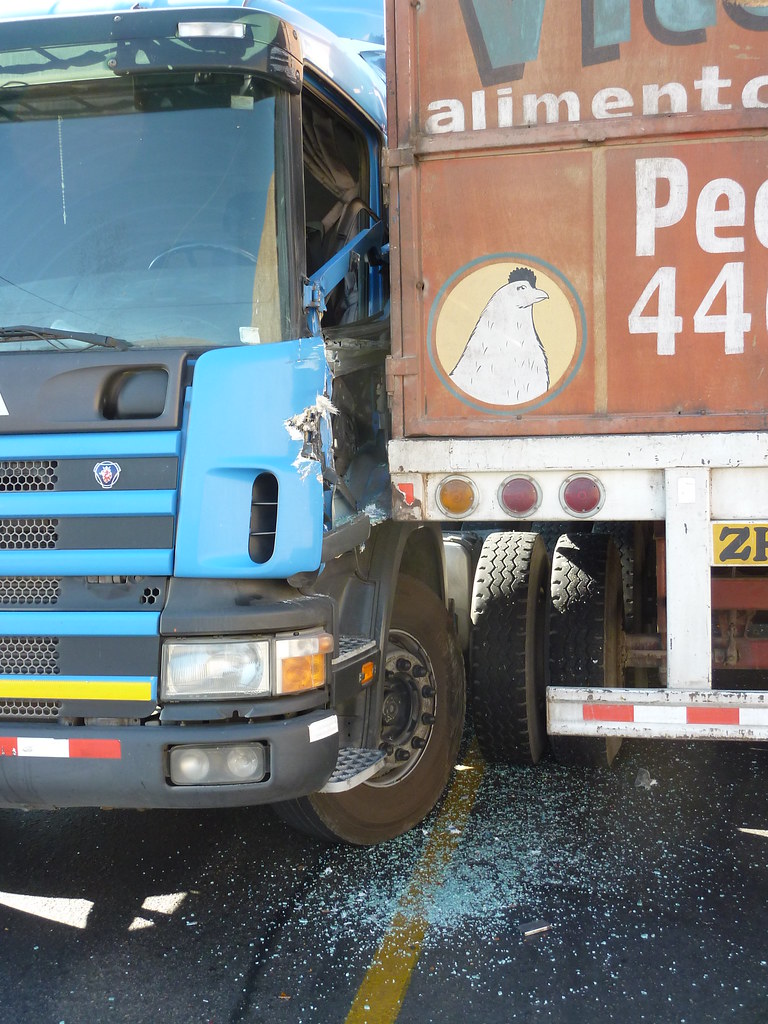
Fortunately no one was hurt. But all three truck cabs were damaged. It took five hours to clear the scene and get through all the formalities. Meanwhile, Boddingtons and I did out best to entertain Sara and her mother - who were both shaken up by the experience. Eventually everyone had calmed down.
By nightfall we were back on the road, but with our damaged cab and slow pace it was clear we weren´t going to make Arequipa that day, so we pulled over. I bought us dinner and Paul explained the sleeping arrangements for that night - the family would take the truck cab and Boddingtons and I would sleep in the back of one of the shiny new pickups. Doubtless the future owner of the red Nissan Frontier that I stayed in that night will never know that a grubby Brit and pongy pooch slept in his nice new truck before he even got it. But that´s exactly what happenned.
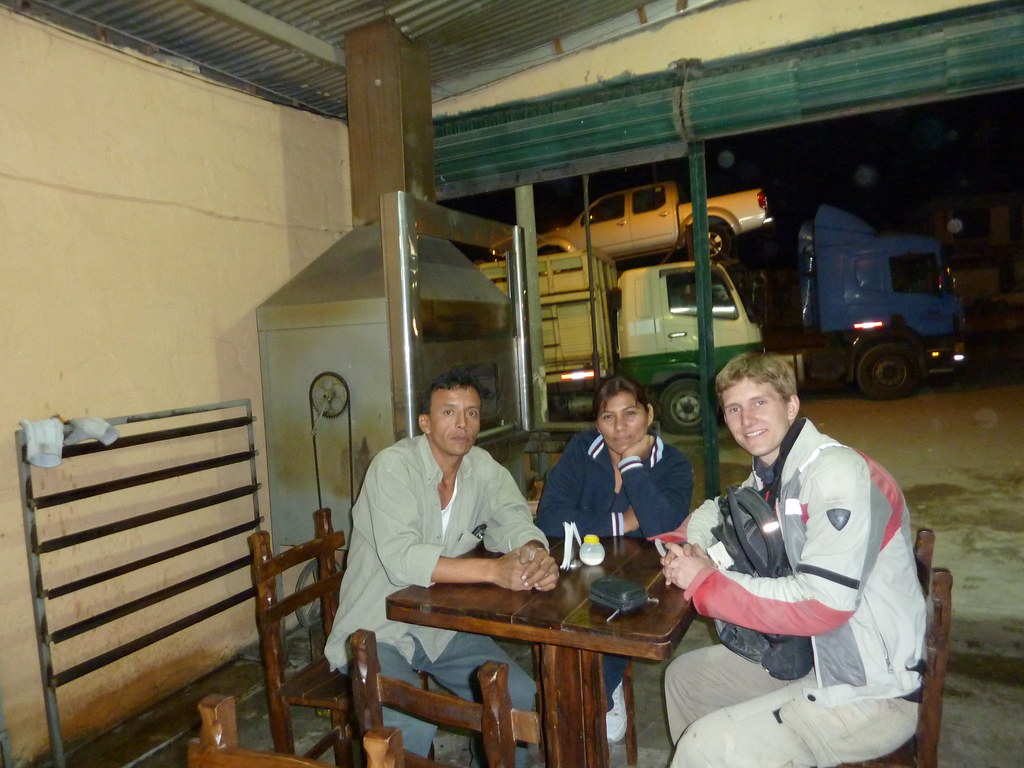
Up at dawn the following day the priority was getting the cars delivered - they were already a day late. As a small measure of compensation for helpìng me with my bike, I offered to help and became assistant transporter for half a day - helping to unload and deliver the cars. A fun and surprisingly laborious experience.
Goodbye
With his work done, Paul arranged for a smaller truck to take my bike to a mechanic in town. Once there, my worst fears were realised. The mechanic confirmed that the engine had seized and that it´d take days to get the parts (a blown piston rod) from Chile. I still don´t know the cause of the fault - perhaps a busted oil pump or clogged pipe. But regardless, I didn´t have the time to wait for the parts and so decided to sell the bike there and then.
A somewhat surprising decision you might think. But I´d actually been planning on selling my trusty steed for some time. I´d had her for only three years, but it´s not the years that age a bike it´s the miles. Together we´d covered over thirty thousand - the equivalent of riding more than once round the world. And with mechanical faults becoming increasingly common I think the Phoenix was trying to tell me that she deserved a quieter life.
And so, with the help of the mechanic, I lined up a buyer - Filipe Pastor - and after a a day of negotiations I was standing in front of my bike for the final time - saying my goodbyes.

It was with mixed feelings that I bid farewell to the Phoenix. She´d been something of a burden towards the end and there was some sense of relief at selling her. But we´d been through so much together, travelled so far, that it was sad too. At least the memories and experiences will stick with me, even if the bike cant.
The circle is complete
With my bike gone, the only thing left was to catch a bus from Arequipa for the final few thousand miles back to Buenos Aires. During 60 hours of arduous bus-ing, Boddingtons and I had plenty of time to discuss our trips. For Boddingtons the unquestionable highlight was Argentina - where the abundance of steak and glorious open spaces (for walkies) made his life all but complete. For me, it was Bolivia that made the trip particularly special. The trials of Tupiza Creek and the Salar de Uyuni will be with me forever.
Now, after 62 days on the road, we´re both right back where we started. A journey of 24,000km - 15,000 by bike, 7500 by bus, and the remainder by river raft, barge, bicycle and on foot.
> "It´s been a helluva trip - ay Boddingtons?", I said.
> "It certainly has" he barked back - "but what next?"
A good question. It´ll probably be a few years before my next big adventure. And with my bike gone I´m not certain the next trip will even be on two wheels. There´s still much of the world to explore. Asia is virtually untouched for me, and riding a Royal Enfield back to London from India certainly appeals. But the world´s oceans also offer much in the way of adventure too. So maybe the next trip will be by boat. If that´s the case, then hopefully a trusty old sea dog will join me. "What do you think of that Boddingtons?"
"I think you should stop your musings Englishman, and throw me that stick."


